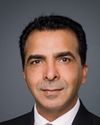Thank you, Mr. Skinner and Mr. Sandhu.
I think that pretty well brings our time to a close. I want to thank both of you for appearing for an hour and a half. Most witnesses get one hour, so thank you for staying longer today. I think your expertise in the area has been noted and appreciated today by the committee.
Although all committee members, I'm sure, have read and studied the 2010 report, I should mention that it is pretty well a new committee that sits here today trying to build on the report from 2010. It seems as if we've had three elections since 2010, so there are many new members sitting on this committee.
We appreciate your testimony today to help us understand this problem a little more.
With that, we will adjourn this part of the meeting. Again, thank you.
We will suspend and return to an in camera portion of this. I want to remind committee members that you are allowed one staffer. Your whip's office can have someone here as well, but one staffer per office. We'll begin in about five minutes.
[Proceedings continue in camera]


